Breasts vary in a range of forms and sizes, and many women seek procedures to get the appearance they believe is best for them. This could range from just raising the breasts to improve shape to increasing or lowering their size.
A woman’s breast size varies six times throughout her life, beginning with her first period and continuing through her 30s, 40s, 50s, and 60s. Breasts develop normally for the first four years after a woman’s first menstruation. Other factors that influence breast size change include pregnancy and breastfeeding, both of which have a major impact on breast growth.
The breasts are mostly made up of adipose (fat) and glandular tissue, which regulates their size and form. Because fat accounts for a significant portion of breast volume, weight gain or loss may contribute to changes in breast size and form, much as breastfeeding increases breast size due to an increase in glandular tissue size (breast parenchyma).
Breast connective tissue and the chest muscles beneath it maintain the weight of the breasts but do not add to their size. Although exercise has no direct effect on breast tissue, it can improve the appearance of the chest by exercising and strengthening the muscles that surround it.
Because the back, shoulder, and chest muscles may have a slight impact on breast projection, concentrating on these muscles with the programmes listed below may be beneficial.
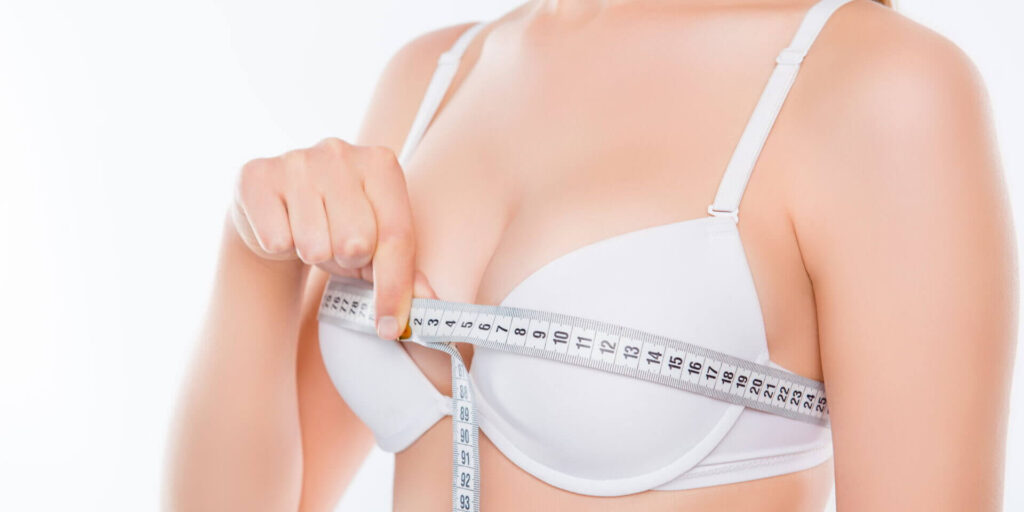
When was the last time you exercised your chest? If you’re having trouble answering this question, you’re not alone. Despite the numerous benefits of strength training, such as weight loss, enhanced heart health, blood sugar control, and increased flexibility and mobility, it appears that most women are uninterested in performing regular chest exercises.
Maybe it’s because of the sweaty swarm of men crowded around those exercise machines? This is most likely because many women are unaware of the multiple advantages that chest exercises give (besides the obvious: muscle strength)
Advantages of beast exercise:
Posture Adjustment: The pecs, as one of the largest muscles in your upper torso, are essential for excellent posture. Your pecs, together with your back and shoulder muscles, help to stabilise the shoulder joint.
Better Breathing: In addition to improving your posture, strengthening and lengthening your chest muscles will allow you to breathe more deeply. This is because your pecs are connected to your ribs, which expand with each breath.
Breast Support: Contrary to popular opinion, pectoral exercises shrink your breasts while chest exercises enlarge them. Muscle development around the breast tissue offers lift and support.
Everyday Benefits: You use your pecs all the time, even if you aren’t aware of them. Lifting, gripping, squeezing, or pushing necessitates the use of your pecs, so having a little extra strength in that area is beneficial.
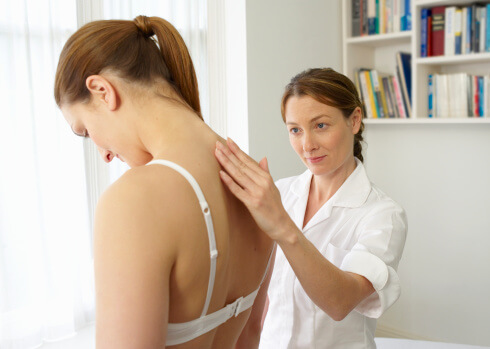
What factors affect breast enlargement?
A mix of inherited and hormonal variables often determines breast size. Hormonal changes, which can trigger breast growth in the human body, are one of the causes. Because of the high levels of oestrogen and progesterone in the body, the breasts grow and become heavy.
Aside from hormonal factors, an unhealthy and inactive lifestyle promotes weight gain, which influences breast size. Other elements that contribute to breast growth are as follows:
Menstrual cycle, Obesity, PCOS, pregnancy, and puberty are all things to think about.
Breast health begins with a well-balanced diet
The foods we eat have an impact on how much fat is deposited in our bodies, and overall body fat can affect breast size. A well-balanced diet (calorie control) paired with exercise can help with both weight loss and breast reduction.
Breast reduction can be aided by simple and persistent home workouts. The chest muscles can be effectively tightened and toned, resulting in good body posture and a toned body.
What you can do?
Boobs. Do you wish it was bigger? Perkier? Firmer?
While surgery — or an extremely costly push-up bra — is the only certain way to achieve this, you can strength train your chest muscles to increase their mass, making your entire chest appear larger.
We’ve compiled a list of 13 breast exercises that you can do with or without equipment to tighten your pecs and make your top half look perkier. Try a handful of these combinations a few times per week to feel fuller than before.
Cobra Pose
Cobra stance is a good warm-up for chest exercises since it works those muscles.
To begin, follow these steps::
- Begin by resting on your stomach, legs outstretched, and feet flat on the floor.
- Place your hands directly beneath your shoulders and tuck your elbows into your sides.
- Raise your chin and chest, keeping your shoulders back and your neck neutral. Straighten your arms as far as possible.
- Hold the stance for 30 seconds before commencing again. Rep three times more.
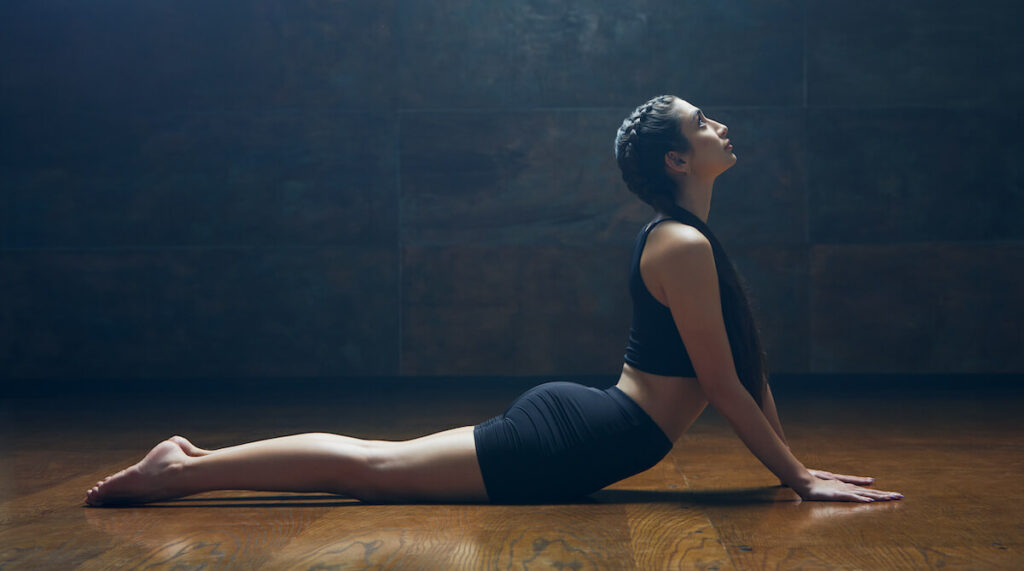
Traveling Plank
We realize how important planks are to you. They appear much better when they move dynamically. While performing this exercise, focus on your chest muscles.
To begin, follow these steps:
- Begin in a plank position, with your head and neck neutral and your hands stacked beneath your shoulders. Check your lower back to see whether it is dropping.
- Raise your right hand and foot off the ground, keeping your core firm, and “step” to the right. This is the final draught.
- Take another step to the right after a brief pause. Finish 10 “steps” to the right, then switch sides and begin again with your left hand and foot.
- Rep three more times.
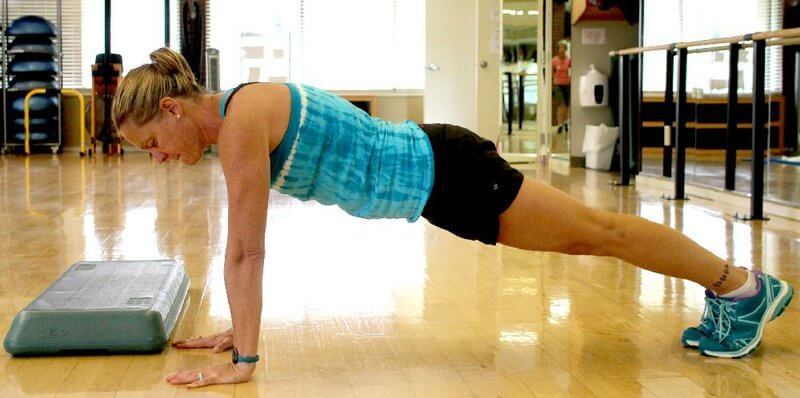
Pushup
Pushups are one of the best whole-body bodyweight workouts because they target the pectoral muscles especially. Kneel if a regular pushup is too difficult.
To begin, follow these steps:
- Start in a plank position with your hands slightly wider than your shoulders, your head and neck neutral, and your core taut.
- Begin by lowering yourself, elbows bent and chest as close to the floor as possible. Check that your elbows are not flexed at a 90-degree angle, but rather tucked in closer to your body.
- Extend your arms to return to the starting position. Complete three sets of as many reps as you can.
Plank reach-under
The plank reach-under is a version of the plank in which you alternate between using one arm and the other for added effort.
To begin, follow these steps:
- Begin in a plank position with your hands under your shoulders, your back neutral, and your core taut.
- Maintain your plank stance by lifting your right hand off the ground and touching it to your left knee.
- Return to the plank position. 10 repetitions with your right arm and 10 repetitions with your left arm This is only one set.
- Complete three sets.
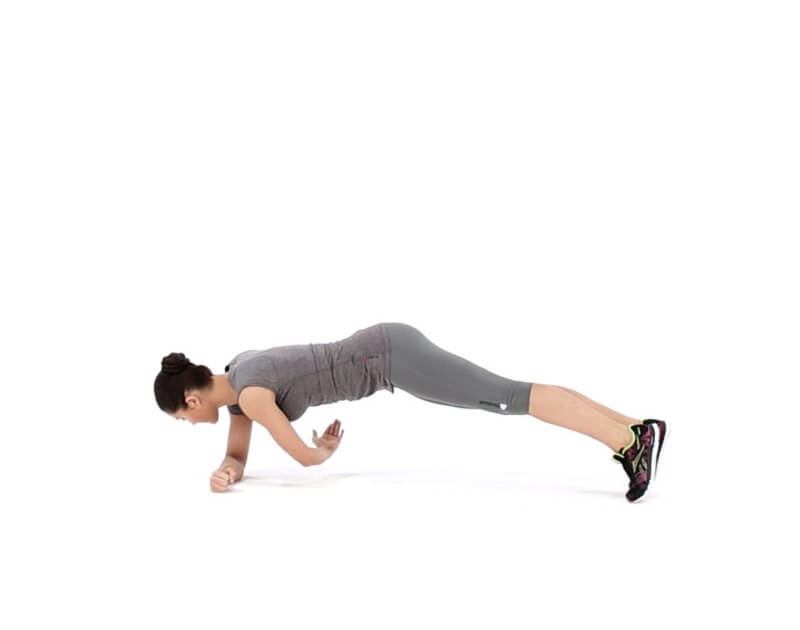
Chest press with dumbbells
The bench press is a traditional chest workout, but when done with dumbbells, you may move more freely. This provides even more bang for your cash. Begin with light dumbbells, such as 10 or 15-pounders.
To begin, follow these steps::
- Begin by holding a dumbbell in each hand at the far end of the bench.
- Lower yourself to the floor with your back flat on the bench, knees bent, and feet flat on the floor.
- Bring your upper arms parallel to the floor with your elbows bent and your weights parallel to your upper arms.
- As you lift the dumbbells off the floor, brace your core and lengthen your arms, concentrating on the working chest muscles.
- After completely extending your arms, pause and slowly lower the weights back to the starting position. This is the last of the draughts.
- Rep 3 times more for a total of 12 reps.
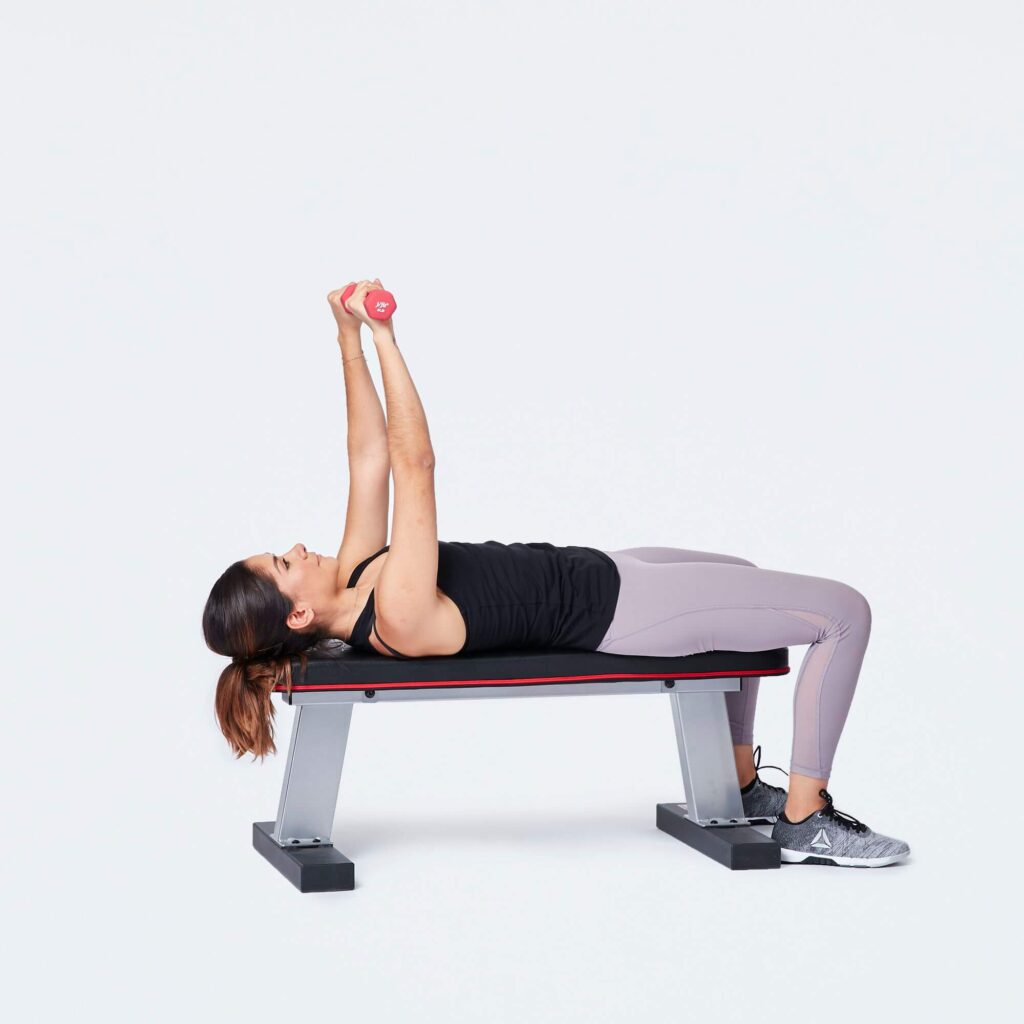
Dumbbells with a stability ball in the air
The chest fly is a great isolated move that focuses on your pectoral muscles. This technique uses a stability ball to work your core more than a traditional bench fly. Begin with light dumbbells to get a feel for the exercise (5 pounds or less).
To begin, follow these steps:
- To begin, sit on a stability ball with your upper body at a 90-degree angle with your lower body trunk and upper legs straight, knees bent, and feet flat on the ground. One dumbbell should be held in each hand.
- Maintain a firm core while stretching your arms, palms facing up and elbows slightly bent. Begin by maintaining your arms parallel to the floor.
- Begin by elevating both dumbbells to your midline at the same time, feeling your pecs work to bring them there. When you’ve reached the centre, drop yourself carefully until your chest expands. This is the final version.
- Complete three sets of 12 repetitions.
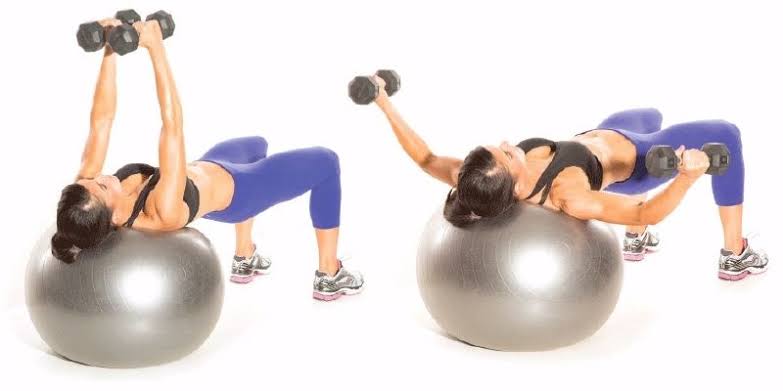
Medicine Ball Superman
A medicine ball can be used for both core and chest exercises.
To begin, follow these steps:
- Begin by lying on your stomach, arms outstretched in front of you, and holding a medicine ball in your hands. The position of your head and neck should be neutral.
- To begin, elevate your legs, upper torso, and medicine ball off the ground using your core and chest.
- Lift as much as you can without straining your neck, then stop completely.
- Return to the start. Complete three sets of 12 repetitions.
Dumbbell Pullover
A dumbbell pullover performed on a stability ball or a bench will target muscles you were unaware existed.
To begin, follow these steps:
- Holding one moderately heavy or two lighter dumbbells in each hand, sit on the stability ball or at the end of the bench.
- Step your feet out to establish a 90-degree angle with your knees. Hold the dumbbell perpendicular to the ground and straight up above your chest with both hands.
- Lower the dumbbell in an arc behind your head while keeping your arms outstretched until you feel a tug on your chest. Your core should be tight during this movement. After a short delay, return to the starting location. Allowing your body weight to fall behind you may result in neck pain.
- Complete three sets of 12 repetitions.
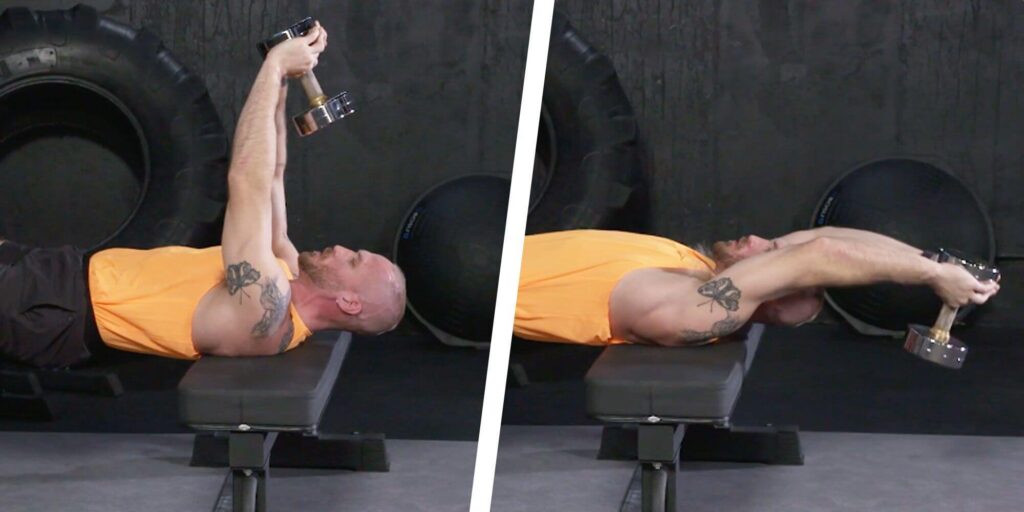
Cable crossover
The cable crossover ensures that each part of the chest is worked for a well-rounded appearance by striking the chest muscles at a shifting angle.
To begin, follow these steps:
- Grab the pulley handles over your head. To return to the starting position, take a step forward, bring the handles together in front of you with your arms extended, and bend slightly at the waist.
- Lift your arms up and out, slightly bending your elbows, until you feel a stretch in your chest.
- Return to the start, pause, and repeat.
- Complete three sets of 12 repetitions.
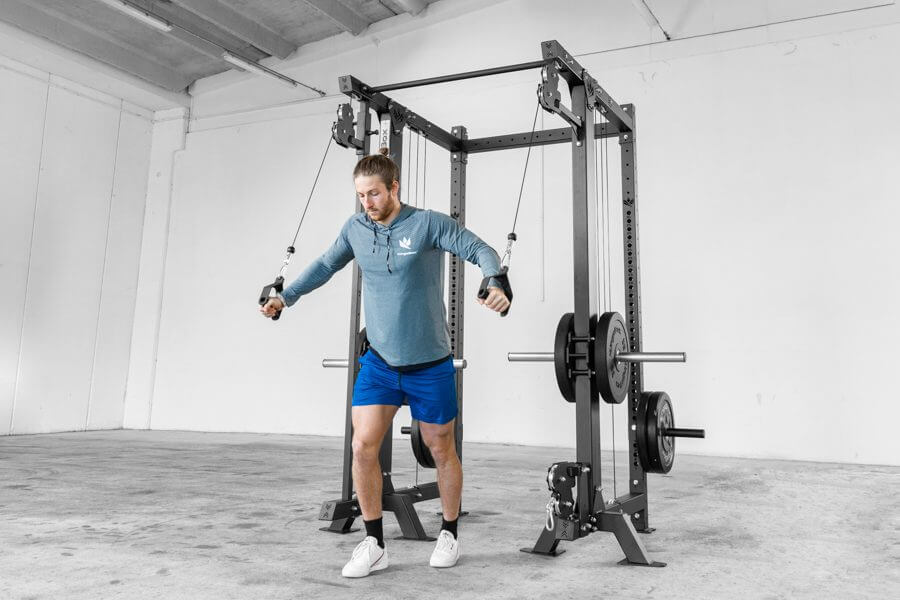
Butterfly Machine
Because the machine aids physiological stability, you should be able to go much heavier than the weights stated below during this manoeuvre. In the end, your chest will scream!
To begin, follow these steps:
- Adjust the machine’s seat to a suitable height. Place your back against the backrest and your forearms against the pads to hold the handles. Simply hold the grips if your machine lacks pads.
- Push your arms together and move the weight with your chest muscles.
- After reaching the centre, return to the starting position and repeat for three sets of 12 reps.
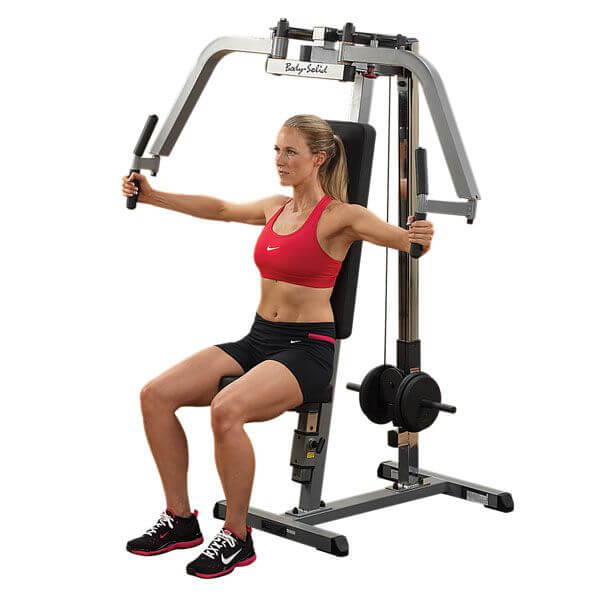
Inclined dumbbell chest press
The angle of this exercise primarily affects the upper pectoral muscles.
To begin, follow these steps:
- Set up the bench at an angle.
- Place your dumbbells on the bench and take a seat. Raise the dumbbells to your chest while reclining with your back straight, elbows bent, and upper arms parallel to the ground.
- Raise the dumbbells above your head while maintaining straight arms. Lower your arms till they are just past parallel, then pause. Repeat.
- Complete three sets of 12 repetitions.
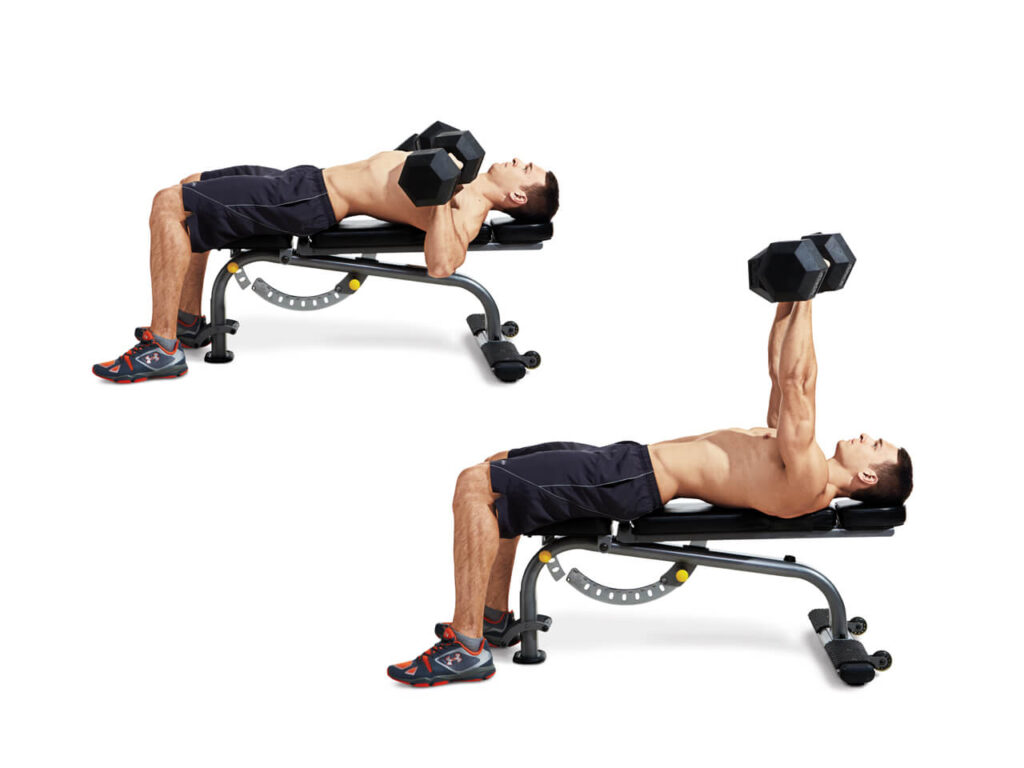
Barbell bench press
The barbell bench press is a classic chest workout that promotes muscular building.
To begin, follow these steps:
- Place your back to the bench, feet flat on the floor, and a barbell across your chest on the bench, supported by your arms. Your hands should be somewhat wider than your shoulders on the bar.
- Straighten the barbell while bracing your core and extending your arms. Return your attention to your chest after a little pause. To finish this workout, concentrate on activating your chest muscles.
- Rep 3 times more for a total of 12 reps.
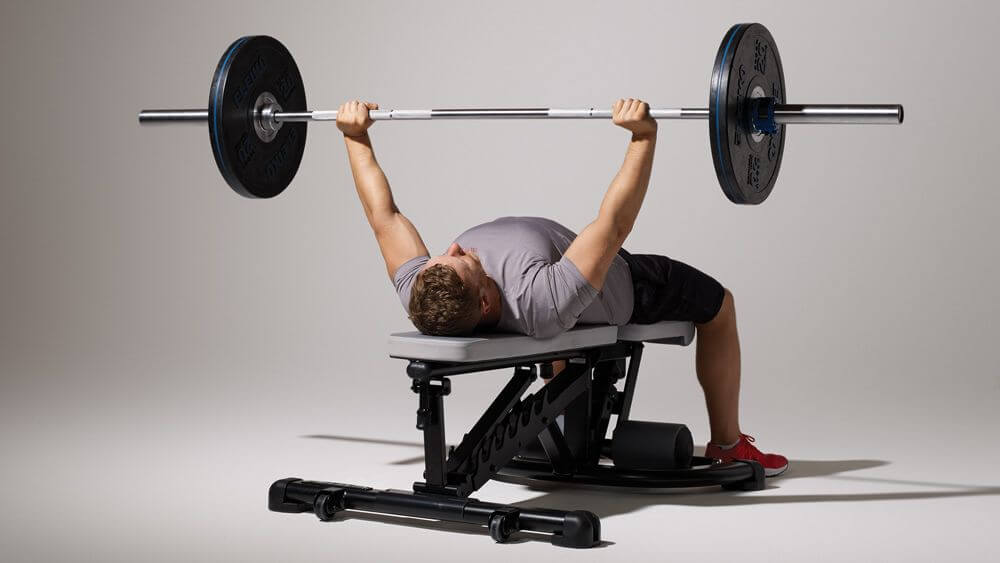
Oblique cable twist
The cable twist is an essential exercise for improving chest benefits and overall toning.
To begin, take the following steps:
- Hang the pulley at shoulder height with a single rope or handle attachment.
- Hold the attachment on the machine’s right side with both hands shoulder-width apart. Your arms should be extended, and your posture should be relaxed and shoulder-width, with your knees slightly bent.
- With your core and chest muscles, twist your upper body to the left until your head is on the far side of the room. Return to the centre after a little pause.
- Rep 10 times on this side, then 10 times on the opposite side. Finish three sets.
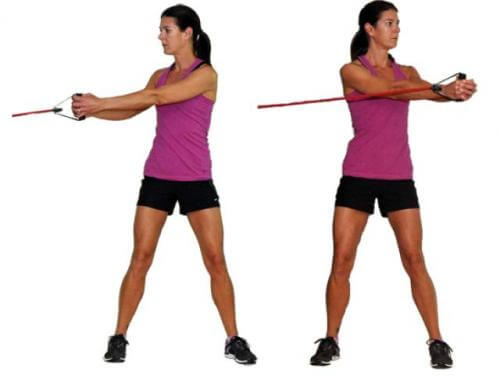
Consider the following:
To observe benefits, repeat three to four of these exercises twice a week. The idea here is to completely focus on the muscle-mind connection; doing so will ensure that you are training your chest muscles as efficiently as possible.
Eat a well-balanced diet and maintain a healthy level of body fat to get the most out of your new chest exercises.
